




Resumen
Este ensayo analiza cómo se representan temas de la dinámica del matrimonio heterosexual —en términos de insatisfacción emocional y sexual— en una selección de ficción japonesa contemporánea escrita por renombradas novelistas femeninas como Natsuo Kirino, Yūko Tsushima, Mitsuyo Kakuta, Yukiko Motoya, entre otras. El objetivo de este ensayo es analizar algunas novelas como medio de resistencia cultural y crítica abierta al matrimonio obligatorio en el Japón contemporáneo. En otras palabras, tanto en la sociedad japonesa contemporánea como en algunas de sus actuales obras de ficción escritas por autoras femeninas, se cuestiona implícita y explícitamente la centralidad de los matrimonios heterosexuales así como las formas particulares que deben adoptar esas relaciones.
Para mi querido amigo MASU
Abstract
This essay will explore the representation of the dynamics of heterosexual marriage in terms of emotional and sexual dissatisfaction, in a selection of contemporary Japanese fiction written by renowned female novelists such as Natsuo Kirino, Yūko Tsushima, Mitsuyo Kakuta, Yukiko Motoya, among others. The objective of this essay is to analyze some novels as a means of cultural resistance and open criticism regarding mandatory marriage in contemporary Japan. In other words, both in Japan contemporary society and some of its current fiction written by female authors, both the centrality of heterosexual marriages and the particular forms those relationships should take are being implicitly and explicitly challenged.
For my dearest friend MASU.

Resumen
Las primeras décadas del Siglo XX marcaron el aumento de las tensiones políticas y diplomáticas entre Japón y Estados Unidos. El aumento de las fricciones desplegó un juego geoestratégico que tiene como escenario principal América Latina. En ese sentido, México jugó un papel importante mediante la implementación de acciones para capitalizar a su favor el acercamiento por parte de Japón. Bajo este contexto particular, en la prensa y dentro de los servicios de inteligencia estadounidenses, surgió el tema de la existencia de un “tratado militar” entre México y Japón.
Abstract
The first decades of the 20th century marked the rise of political-diplomatic tensions between Japan and the United States. In this context, increased friction deployed a geostrategic game having a main stage in Latin America. In that sense, Mexico played an important role implementing actions to capitalize in its favor the approach by Japan. In this particular context, the recurring theme of the existence of a “military treaty” between Mexico and Japan emerged in the press and within the US intelligence services.

Resumen
En el marco de los sistemas socio-ecológicos, hacer frente al cambio climático requiere conocer tanto la interacción entre sistemas como las interacciones dentro de los mismos. En este sentido, este trabajo pretende dibujar un esquema sobre la interacción entre las empresas y el marco institucional que las rodea para así, promover capacidades que les permitan hacer frente al cambio climático y ser resilientes ante el mismo. Se insinúa que, en ausencia de una política verde clara, las asociaciones entre empresas y otros aliados pueden crear un entorno que favorezca el desarrollo de estas capacidades.
Abstract
In the framework of socio-ecological systems, coping with climate change requires both knowledge of the interaction between systems and the interactions within them. In this sense, this work seeks to draw an outline of
the interaction between the institutional framework that surrounds companies and these for the promotion of capabilities that allow them to face climate change and be resilient. There are hints that in the absence of a clear green policy, partnerships between companies and other allies can create an environment that favors the development of these capacities.
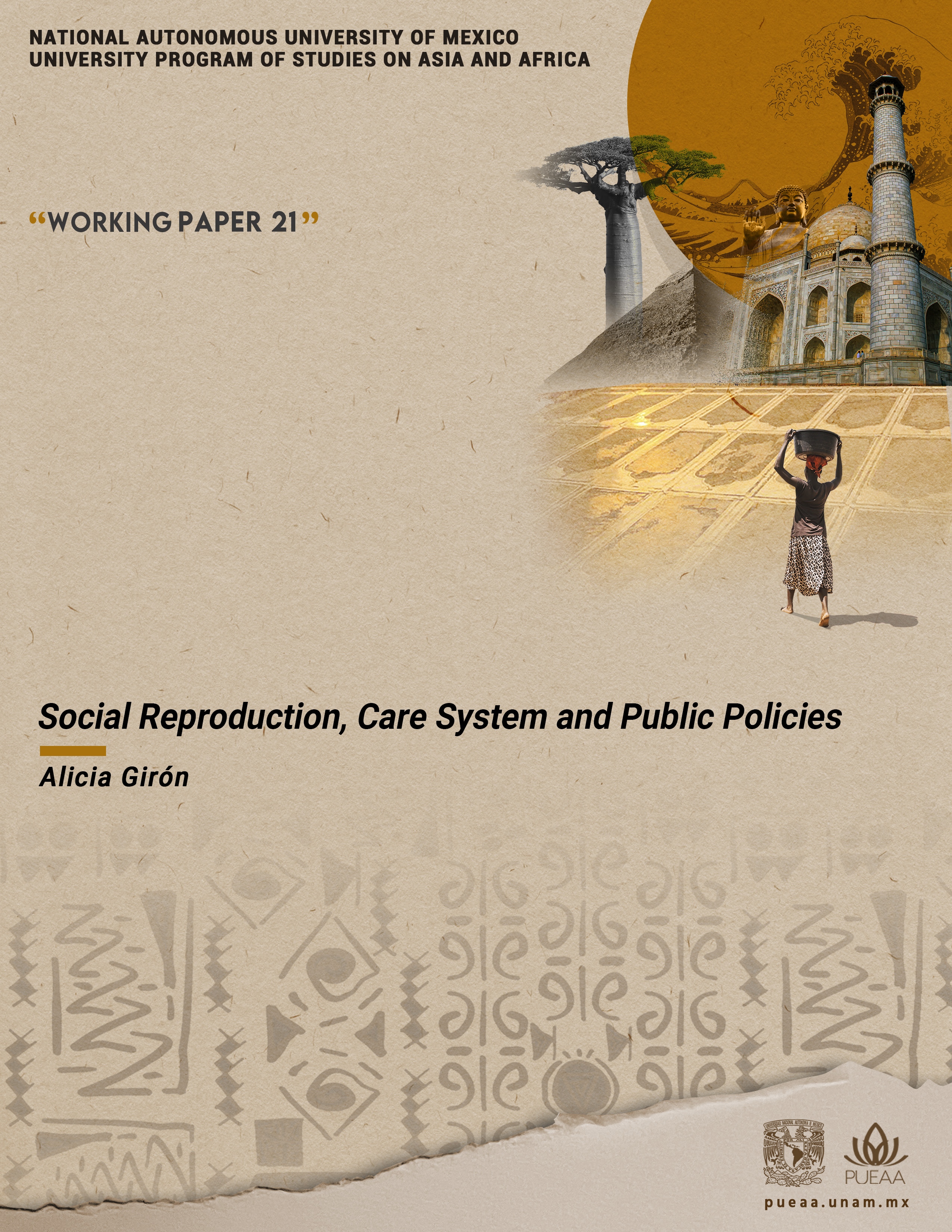
Resumen
La crisis de la reproducción social se profundizó durante la postpandemia acompañada de una crisis económica y financiera a nivel mundial. Las desigualdades e inequidades de género en el desenvolvimiento del confinamiento mostraron como objetivo prioritario “desatar los nudos estructurales de la desigualdad de género” ubicando al cuidado de las personas y el medio ambiente en el centro del “desarrollo sostenible” de nuestras sociedades. Al poner en el centro de la discusión al cuidado como parte de un sistema de políticas públicas con enfoque de género es inminente una nueva rearticulación del gasto público desempeñado hasta el día de hoy. El objetivo del presente trabajo es partir de las brechas sobre el cuidado y su relación con la reproducción social para ahondar en el tiempo dedicado al trabajo doméstico y de cuidado no remunerado que existe entre mujeres y hombres al interior de la unidad familiar. La hipótesis de investigación es demostrar cómo la desigualdad en el tiempo dedicado por parte de las mujeres al trabajo no remunerado frente a los varones en la unidad familiar redunda en la falta de oportunidades de aquellas para obtener mejores ingresos al participar en empleos precarios remunerados tanto en la economía formal e informal.
Abstract
The crisis of social reproduction deepened in the post-pandemic, and a global economic and financial crisis accompanied it. Gender inequalities and inequities in the development of confinement showed, as a priority objective, to "untie the structural knots of gender inequality", placing the care of people and the environment at the center of the "sustainable development" of our society. By setting care at the center of the discussion and as part of a system of public policies with a gender focus, a re-articulation of public spending carried out to date is imminent. The objective will be to start from the gaps in care and its relationship with social reproduction to delve into the time committed to domestic work and unpaid care among women and men within the family unit. The research hypothesis is to show how the inequality in the time devoted by women to unpaid work, compared to men in the family unit, results in the lack of opportunities to acquire better income because of their involvement in precarious jobs, both paid in the formal and informal economy.
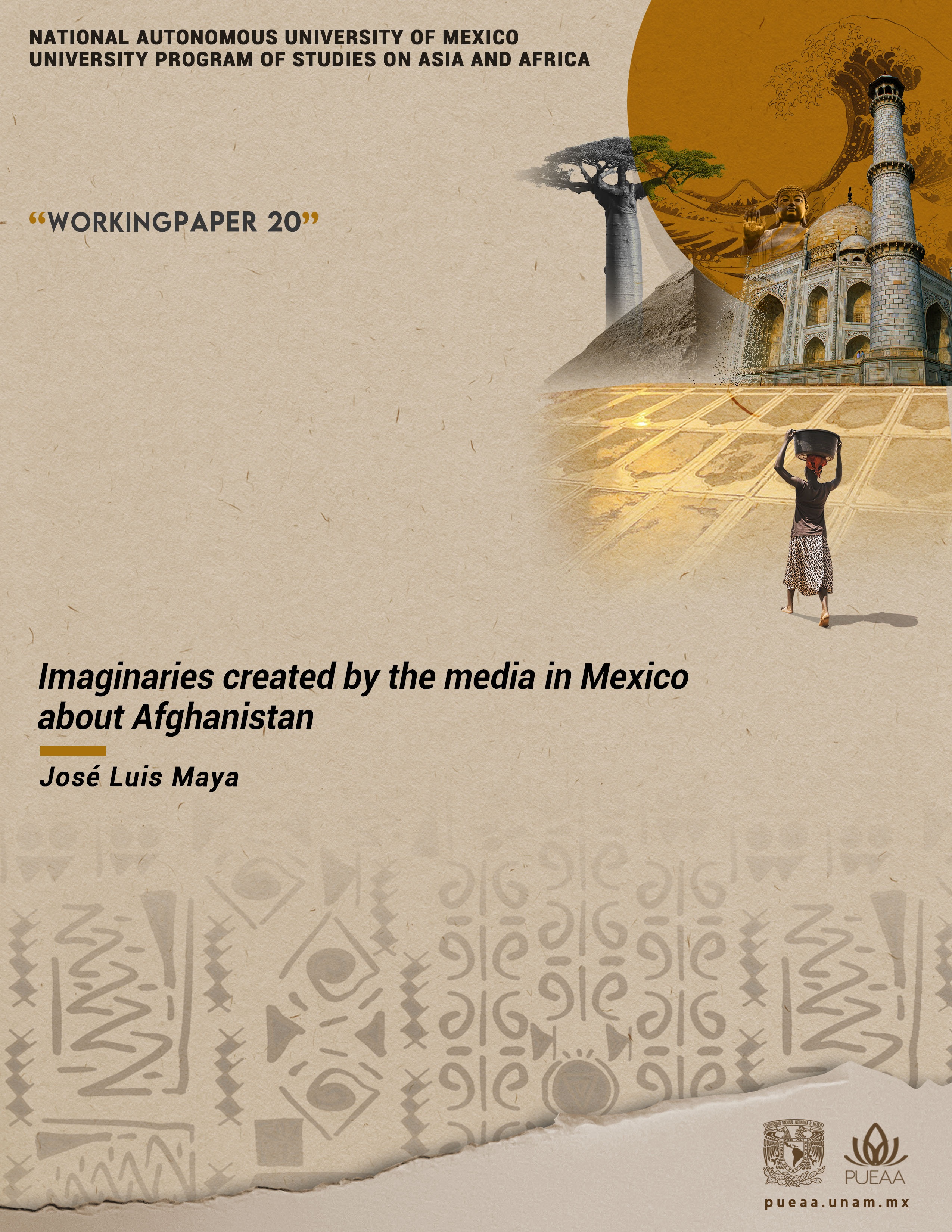
Resumen
Tras la retirada de las tropas estadounidenses de Afganistán, después de 20 años de ocupación, los ojos de diferentes sectores alrededor del mundo voltearon al país asiático. Los medios de comunicación mexicanos no fueron la excepción. Día a día reportan historias desde diferentes perspectivas, a través de las cuales los mexicanos formaron un imaginario sobre ese país. Es cierto que los medios de comunicación, en sus diferentes formatos, influyen de manera directa en la percepción que las personas se forman sobre Afganistán, pero ¿qué tan cercanas a la realidad son esas historias?
Abstract
Following the withdrawal of U.S. troops from Afghanistan, after 20 years of occupation, the eyes of different sectors around the world have turned to that Asian country. Mexico's mass media are no exception. Day by day they report stories from different perspectives, through which Mexicans form an imaginary of that country. It is true that the media, in its different formats, directly influences the perception that people form about Afghanistan, but how close to reality are these stories?
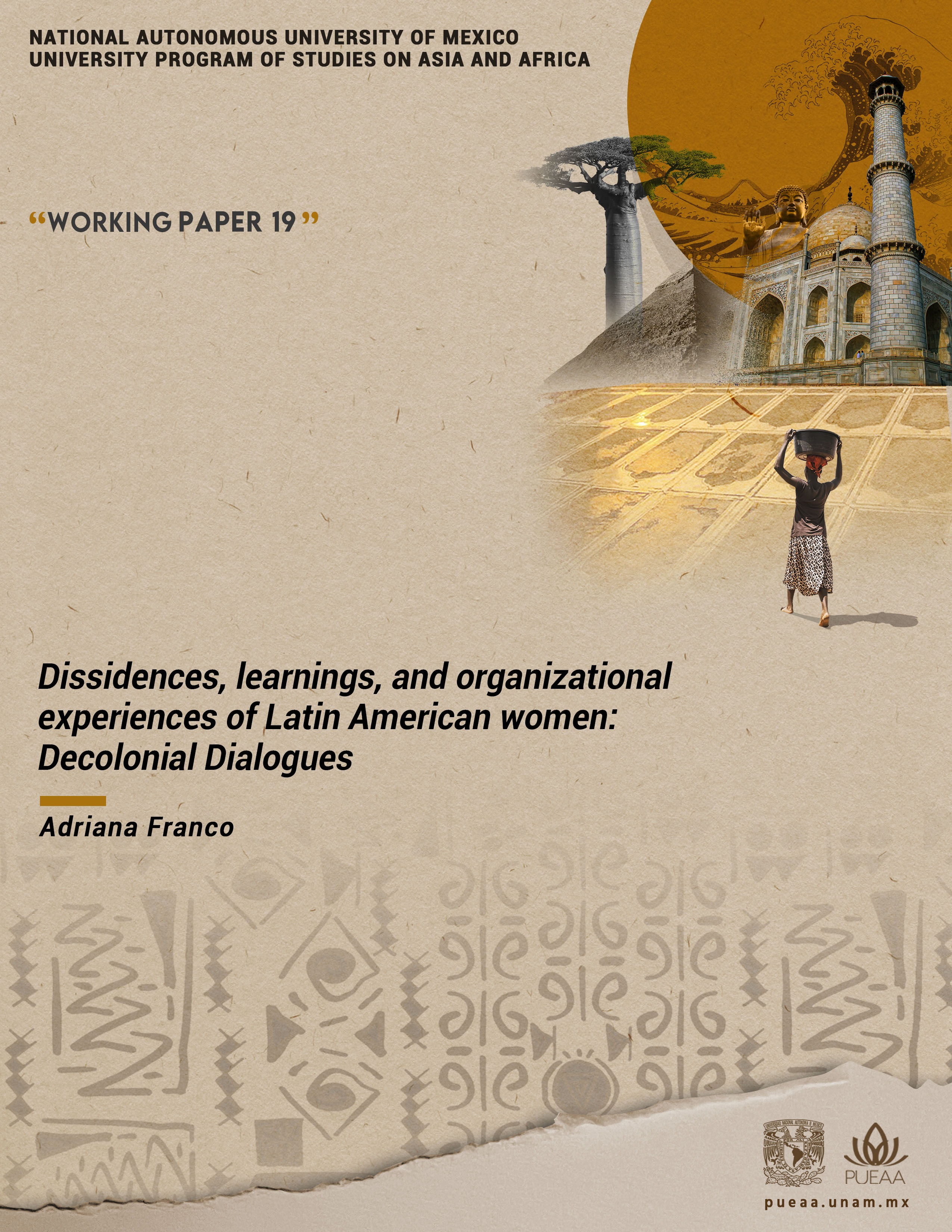
Resumen
En los últimos años, la violencia contra las mujeres ha aumentado significativamente en América Latina. Ante este contexto, las mujeres no han permanecido pasivas, sino que se han organizado para hacer frente a la violencia del sistema. El feminismo comunitario de Bolivia y Guatemala, así como la organización de las mujeres negras en Brasil son sólo algunos ejemplos de los diferentes movimientos de mujeres en toda la región. Las propuestas que han surgido de estos grupos han visibilizado la violencia histórica del capitalismo y también están proponiendo nuevas formas de socialización a partir de la recuperación de su propio conocimiento y experiencias. De esta manera, en este texto se compartirán algunos enfoques, enfatizando que las propuestas confrontan el sistema imperante y brindan alternativas para enfrentar la crisis civilizatoria.
Abstract
In recent years, violence against women has increased significantly in Latin America. Faced with this context, women have not been passive, but have organized themselves to confront the violence of the system. The community feminism of Bolivia and Guatemala, as well as the organization of black women in Brazil are just a few examples of the different women's movements throughout the region. The proposals that have come out of these groups have made visible the historical violence of capitalism and are also proposing new ways of socialization based on the recovery of their knowledge and experiences. In this way, in this text some of their approaches will be shared, emphasizing that the proposals confront the prevailing system and provide alternatives to face the crisis of civilization.

Resumen
La siguiente reflexión tiene el objetivo de analizar las estrategias de resiliencia de mujeres y niñas afganas a lo largo del siglo XXI para compararlas con aquellas otras estrategias que mujeres y niñas mexicanas, de comunidades rurales o urbanas, deben utilizar en su vida cotidiana para sobrevivir entre diferentes tipos de condiciones de marginalización, discriminación y violencia. Este artículo compara la representación y construcción de estereotipos femeninos negativos originados en las visiones más tradicionales del islam y el catolicismo, para analizar la respuesta que mujeres contemporáneas, resilientes y combativas han ofrecido para luchar contra estos supuestos culturales, en busca de mayores libertades, derechos y oportunidades para vivir con dignidad. Esta comparación cultural tiene el propósito de observar a las mujeres como sujetos activos, capaces de responder y actuar en situaciones de opresión, discriminación y maltratos cotidianos en sociedades patriarcales donde la violencia contra las mujeres es uno de los problemas sociales, políticos, económicos y culturales de mayor urgencia.
Abstract
The next reflection has the purpose of analyzing the resilience strategies of Afghan women and girls throughout the 21st century to compare them with those other strategies that many Mexican women and girls from rural and urban communities have to use on a daily life to survive in the midst of different types of conditions of marginalization, discrimination and violence. The communication compares the representation and construction of negative female stereotypes originated in the most traditional visions of islam and catholicism to analyze the response that contemporary, resilient, and combative women have offered to fight against these cultural assumptions in search of greater freedoms, rights, and opportunities to live with dignity. This cultural comparison has the purpose of looking at women as active subjects, capable of responding and acting in situations of oppression, discrimination, and daily mistreatment in patriarchal societies where violence against women is one of the social, political, economic and cultures of most urgent attention.
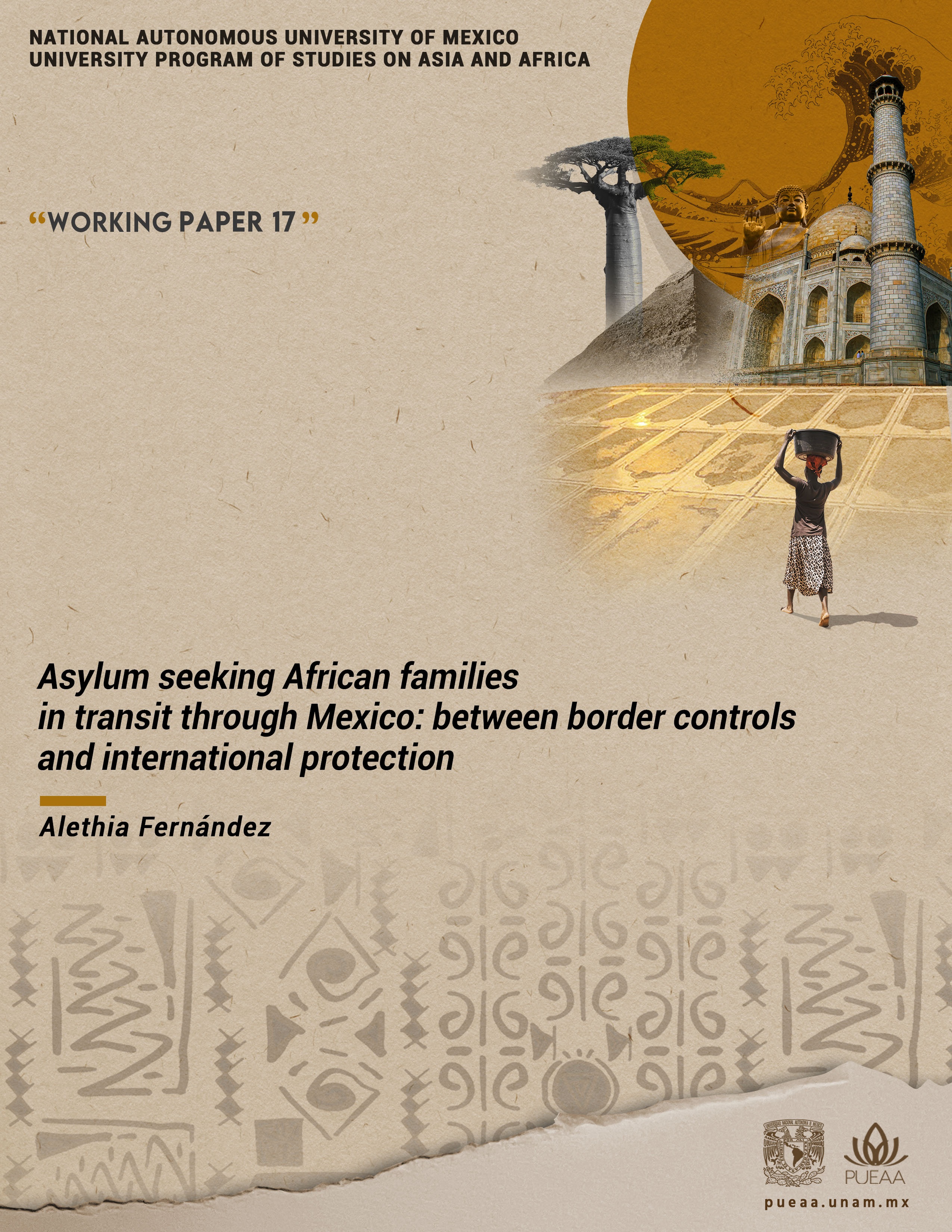
Resumen
Los migrantes africanos en México son unos de los flujos migratorios que menos se han estudiado desde Latinoamérica (Cinta Cruz, 2020). En los últimos cinco años, migrantes de 35 países africanos fueron detenidos en México. A pesar de que los arrestos de africanos son mucho menores que en el caso de países centroamericanos, en promedio entre 6 y 19 personas son detenidas diariamente. Es esencial conocer sus patrones de movilidad, identificar sus necesidades de protección internacional, y los principales obstáculos a los que se enfrentan, ya sea que crucen a los Estados Unidos o se queden en México como refugiados (Narváez Gutiérrez, 2015). Además, estas poblaciones son frecuentemente estigmatizadas y expuestas a enfrentar racismo y violencia institucional cuando entran en contacto con las autoridades mexicanas (Immigration, 2021). El objetivo de este artículo es presentar algunos datos sobre la migración de personas africanas en México después de la llegada de las caravanas en 2018, y reflexionar sobre el impacto de un discurso global que estereotipa a los migrantes como criminales o enfermos, y cómo esto afecta el acceso a los derechos humanos de los solicitantes de asilo en México y sobre los efectos de una tendencia creciente a tratar a los migrantes como beneficiarios de ayuda humanitaria temporal y no como sujetos de derechos.
Abstract
African migrants in Mexico are migratory flows that have been less studied than migration from Latin America (Cinta Cruz, 2020). In the last five years, migrants from 35 different African countries were detained in Mexico. Although arrests of African persons are much lower than in the case of Central American countries, on average, between 6 and 19 African persons are detained per day. It is essential to know their mobility patterns, identify their international protection needs, and the main obstacles they face, whether to cross into the United States or to remain in Mexico as refugees (Narváez Gutiérrez, 2015). In addition, these populations are often highly stigmatized and exposed to face racism and institutional violence when they contact Mexican authorities (Immigration, 2021). In this working paper, my objective is to present some data on the migration of African people in Mexico after the arrival of caravans in 2018 and to reflect on the impact of a global discourse that stereotypes migrants as criminals or sick people in the access to human rights of African asylum seekers in Mexico and on the effects of a growing tendency to treat migrants as beneficiaries of temporary humanitarian aid rather than as subjects of rights.

Resumen
Este artículo pretende analizar cuáles son las implicaciones directas e indirectas que tuvo en Latinoamérica la salida de Estados Unidos de Afganistán, especialmente en el ámbito económico, aspecto menos explorado. Mi punto es que hubo algunas afectaciones económicas directas, gracias a la falta de relevancia de los vínculos comerciales y de inversión entre Afganistán y los países latinoamericanos, pero las consecuencias de la salida de Estados Unidos repercutieron a través del sistema global y a través de sus efectos reales y potenciales sobre temas de interés común. Como países periféricos y semiperiféricos, y a pesar de la ausencia de guerras internacionales en la región, varios países latinoamericanos comparten con Afganistán aspectos de su inserción en la economía global que incluyen actividades ilícitas o al margen de la legalidad, como la producción, tráfico y exportación de drogas, o la privatización de la guerra, o se ven afectados por los enfrentamientos entre las grandes potencias, especialmente Estados Unidos y China. Este trabajo se organiza como sigue: en una primera sección introducimos brevemente la economía afgana y se muestran los débiles vínculos que mantiene con Latinoamérica. La segunda sección analiza algunas reacciones inmediatas de Latinoamérica a la retirada de Estados Unidos y examina uno de sus efectos directos, relacionado con la participación en Afganistán de militares y ex militares colombianos. La tercera sección aborda las repercusiones de la retirada de Estados Unidos de la “guerra contra las drogas”, que involucra a varios países latinoamericanos, así como Afganistán, y la cuarta sección aborda los posibles impactos en las iniciativas internacionales de infraestructura en ambas regiones. La última sección presenta las conclusiones.
Abstract
In this paper, I aim to analyze which direct or indirect implications the US withdrawal from Afghanistan had for Latin America, especially in the economic sphere, an aspect less addressed. My point is that there were few direct economic effects, due to the lack of relevance of trade and investment links between Afghanistan and Latin American countries, but the consequences of the US exit reverberated through the global system and through its real and potential effects on topics of common interest. As peripheral and semi-peripheral countries, and despite the absence of international wars in the region, several Latin American countries share with Afghanistan aspects of an insertion in the global economy which includes illicit activities or activities at the margins of legality, like the production, transit and exports of drugs, or the privatization of war, or are affected by the struggles between the great powers, especially the United States and China. The paper is organized as follows: in a first section we briefly introduce the Afghan economy and show the weak links it maintains with Latin America. The second section discusses some immediate reactions to the US withdrawal in Latin America and examines one of its direct effects, related to the participation of Colombian military personnel and former soldiers in Afghanistan. The third section deals with the reverberations of the US exit on the “war on drugs,”, which involves several Latin American countries as well as Afghanistan, and the fourth section approaches the possible impacts on the international infrastructure initiatives in both regions. The last section concludes.

Resumen
Este documento se enfoca en el proceso de aprendizaje de los japoneses al estudiar español como segunda lengua. Como primer punto se abordan algunas características de los estudiantes japoneses, así como sus intereses al estudiar un idioma. Posteriormente se describe el sistema de enseñanza de idiomas en Japón; y se aborda el comportamiento de los estudiantes al momento de estudiar un idioma, así como el tipo de actividades que prefieren realizar durante la clase. Además, se mencionan diversos métodos de enseñanza que pueden ser aplicados de acuerdo con los intereses de los jóvenes japoneses y las diferencias culturales. Por último, el autor considera que enseñar español a estudiantes japoneses contrae diversos retos que deben ser solucionados para obtener mejores resultados; de tal forma, los maestros deberán implementar diferentes métodos de aprendizaje basados en que las personas aprenden haciendo las cosas por sí mismos.
Abstract
This paper focuses on the Japanese students’ learning process when they study Spanish as a second language. First, it mentions some students’ profile characteristic and their interests in learning a new language. Second, it describes the learning language system in Japan, the students’ behavior in the language classes, and which activities they prefer to do in class. In addition, it describes different kinds of learning methods that could be applied depending on the students’ interests and cultural differences. Finally, the author considers that teaching Spanish to Japanese students raises several issues that have to be attended in order to achieve success. Since learning a language implies hard work and effort, teachers must try different methods and approaches relying upon scientific evidence based on one fundamental assumption: people learn by doing things themselves

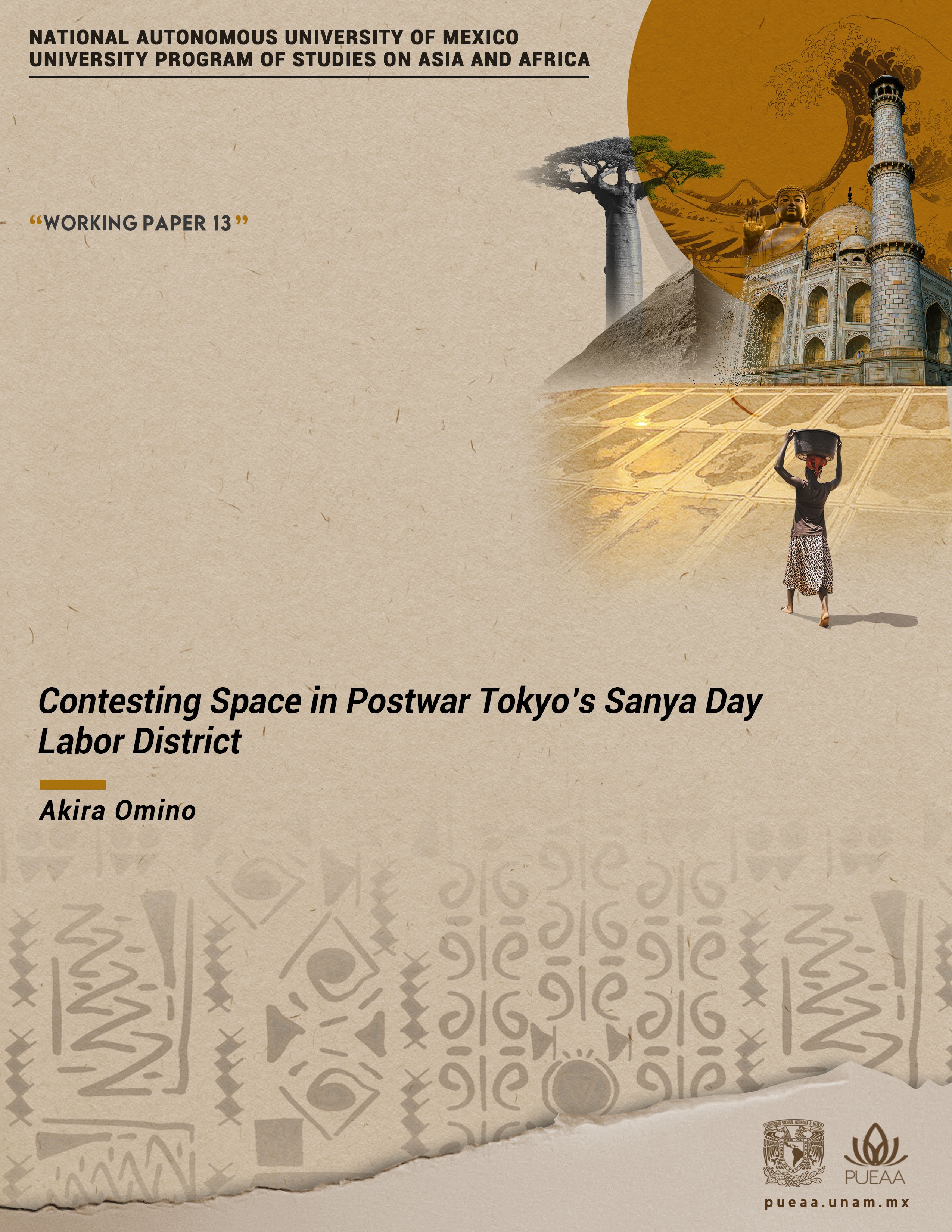
Resumen
Este artículo examina una serie de disturbios de jornaleros que se produjeron entre 1959 y 1962 en el mayor distrito de jornaleros de Tokio, Sanya. De este modo, se intenta comprender cómo los cambios sociales locales se relacionaron con los disturbios. Este documento sostiene que dichos disturbios representan una reacción radical por parte de los jornaleros de Sanya a los complejos cambios macroeconómicos que acompañan a la era del crecimiento de alta velocidad. Estos cambios, íntimamente relacionados con la industria de la construcción nacional, transformaron a Sanya en un espacio urbano rentable, en el que se podía invertir capital y generar valor.
Abstract
This article examines a series of day laborer riots that occurred between 1959 and 1962 in Tokyo's largest day laborer district, Sanya. In doing so, it attempts to understand how local social changes were related to the riots. This paper argues that these riots represent a radical reaction on the part of Sanya's day laborers to the complex macroeconomic changes accompanying the era of high-speed growth. These changes, intimately related to the domestic construction industry, transformed Sanya into a profitable urban space in which capital could be invested and value generated.